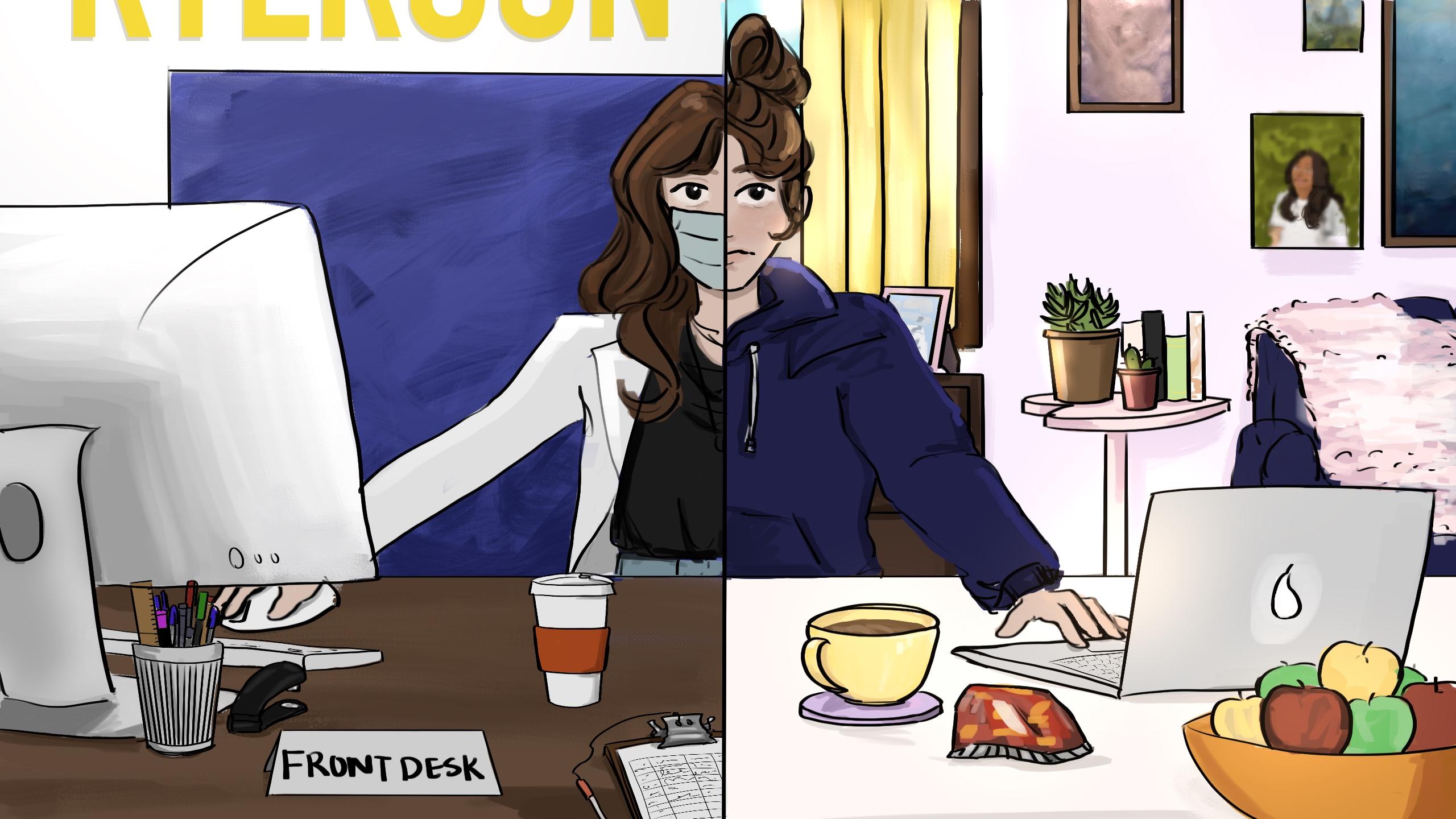By Nishat Chowdhury
Community members at Ryerson say a hybrid model would be safer and alleviate barriers for marginalized students working on campus instead of a full return to in-person activities this semester.
The university previously announced in November that Ryerson faculty and staff are required to be available to work on campus in the winter 2022 term, The Eyeopener previously reported.
Tania Abraham, a fourth-year social work student who is doing her placement with Human Rights Services at Ryerson, said a hybrid model that works both for the workplace and for individuals should be made available. Each employee should be able to decide how they want to work, Abraham argues.
“It’s really hard to implement a mandate like this and make everyone conform to it since everybody has their own situations at home and their own circumstances. It is difficult to cater toward everyone,” said Abraham.
To help curb the rise of the Omicron variant in Ontario, Ryerson president Mohamed Lachemi announced classes and work will be held remotely until Jan. 30 for the safety of students and faculty, leading students to reassess their needs in the workplace.
Long commutes
Abraham said she has chosen to stay remote for the winter 2022 term because her work can be done online and she would like to avoid the hour-long commute to and from campus. The School of Social Work has made it mandatory for all placements to continue virtually, regardless of whether the organization is continuing their services in-person.
However, some students said they are looking forward to returning to campus, citing that they’ve been missing face-to-face interactions in their workplace.
“It’s really hard to maintain a structural hierarchy when there’s no physical structure anymore”
Shahram Farhadi, a third-year business technology management student, as well as a program admin and operations lead for the Recreation and Athletic Centre (RAC), said he’s excited to return to campus because he’s looking forward to interacting with his coworkers in person.
“My job is much more fun when I’m in-person because I get to see people around the RAC working out and vibe,” said Farhadi.
According to Farhadi, transportation is a huge barrier for lower-income students. Like Abraham, Farhadi said he is most anxious about his over hour-long commute to and from campus.
“Once we’re mandated to go in person, students who can’t afford it or have other priorities will start missing classes or work.”
Mental health stressors
Pria Nippak, interim director of the health services management program at Ted Rogers School of Management, said she thinks every employer should be offering an option to work from home.
“If it’s not done at an exchange or you’re not doing it at the loss of quality, I don’t see what the problem is,” said Nippak, who added that she doesn’t want to go back to campus because working from home has minimized her mental health concerns and stressors.
In January 2019, Nippak filed a complaint with the Human Rights Tribunal of Ontario against the university for racial discrimination, as previously reported by The Eye.
“I had a pretty toxic work environment. There’s a definite hierarchy that is race-based in TRSM. So I’m very happy because that fell by the wayside when we went virtual,” said Nippak. “It’s really hard to maintain a structural hierarchy when there’s no physical structure anymore. It dissipates.”
Nippak also said being online has given her the opportunity to have healthy dialogue and advocate for herself or her department in ways she didn’t feel comfortable doing in-person.
Missed opportunities for international students
On the other hand, Smiksha Singla, an international student from Dubai in her third year of the creative industries program, said she is craving in-person interaction after being deprived of it for so long.
Singla said international students were “deeply affected” by the lack of in-person activities, which are beneficial in teaching students how to speak or conduct themselves in different settings.
“For me, the priority will be to actually get the experience and exposure I left my home country for. That is my priority above anything else,” said Singla, a communications and special projects intern at the Office of the Vice-President, Research and Innovation.
Singla said she is relieved that everyone on campus will be vaccinated and is not as worried about the safety aspect of returning to campus for work.
As of now, Singla said she is just concentrating on the positives and trying to keep an optimistic outlook.
“If I start thinking about the [anxiety] or the finer details, it’ll get crazy. I’m anxious but it kind of balances out how excited or how I’m looking forward to it,” said Singla.
Continuing to follow safety measures
For reassurance, Timothy Sly, emeritus professor of epidemiology at the School of Occupational and Public Health at Ryerson, said the school is at a point where it has done everything it needed to do for a safe return to in-person activities.
“They’ve consulted very widely with experts and consulting companies, they’ve taken every precaution that they can possibly do,” said Sly, who has been advising the university on how to implement safety measures to prepare for an almost-full return in winter 2022.
Sly says if students and faculty continue following health and safety regulations, it will grant greater protection against the transmission of the virus.
“The screening and monitoring, the vaccination, the re-vaccination, the masking, the distancing—all those things together produce a good protection. But if we let two or three of them down, the risk goes back up again,” said Sly.











Leave a Reply